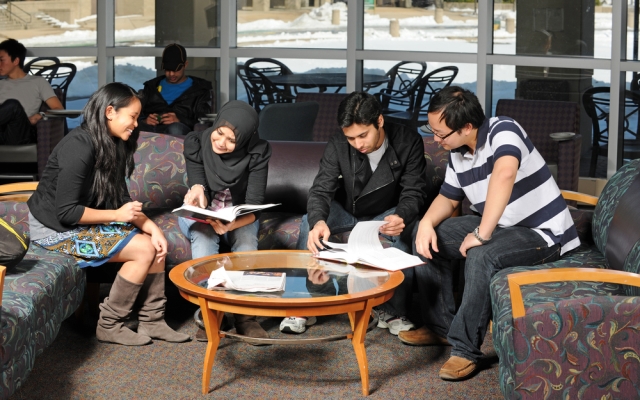 A record number of international students studying in the U.S. contributed billions to the U.S. economy during the 2012-2013 academic year, according to an economic analysis by NAFSA: Association of International Educators. Over the academic year, international students and their families support 313,000 jobs and contributed $24 billion to the U.S. economy. The NAFSA report is based on enrollment data from the latest Open Doors Report from the Institute of International Education (IIE), which found that 819,644 international students studied in the U.S. during the 2012-2013 academic year. A growing number of students from China and Saudi Arabia led the 7 percent increase. And based on NAFSA’s analysis, the jump adds up to a 6.2 percent increase in job support creation and a 10 percent increase in dollars added to the U.S. economy over the previous academic year.
A record number of international students studying in the U.S. contributed billions to the U.S. economy during the 2012-2013 academic year, according to an economic analysis by NAFSA: Association of International Educators. Over the academic year, international students and their families support 313,000 jobs and contributed $24 billion to the U.S. economy. The NAFSA report is based on enrollment data from the latest Open Doors Report from the Institute of International Education (IIE), which found that 819,644 international students studied in the U.S. during the 2012-2013 academic year. A growing number of students from China and Saudi Arabia led the 7 percent increase. And based on NAFSA’s analysis, the jump adds up to a 6.2 percent increase in job support creation and a 10 percent increase in dollars added to the U.S. economy over the previous academic year.
This is the third consecutive year that the Open Doors Report has shown a significant jump, and after a decrease following the Sept. 11, 2001, terrorist attacks, there are 40 percent more international students studying in the U.S. compared to a decade ago. “A student from virtually any country can find an opportunity to study in the US,” Allan Goodman, president and CEO of IIE, told the Christian Science Monitor. “The diversity of who comes to America continues to be inspiring and impressive.” The top 25 countries of origin for international students—including Brazil, Kuwait, Mexico, Nigeria, and Spain, to name a few—send 5,000 or more students to the U.S.
And the students coming to the U.S. are studying across the nation. California, New York, Massachusetts, Texas, and Pennsylvania saw the largest boost from international students and their families from spending on living expenses, tuition, and fees. NAFSA found that three U.S. jobs are created or supported for every seven enrolled international students. These jobs are in higher education, accommodation, dining, retail, transportation, telecommunications, and health insurance. In House Speaker John Boehner’s district alone, NAFSA’s analysis shows that 1,275 international students contributed $45.8 million to the local economy and supported 718 jobs.
But without immigration reform to help remove limits that stop some students from being able to study in the U.S. or remain here after they finish their degrees, the U.S. is missing out on enormous benefits, according to NAFSA Executive Director Marlene Johnson. “These data clearly show the tremendous economic opportunity costs we face unless the House acts decisively to break down barriers for the best and the brightest international students and scholars to come here,” Johnson said. Beyond the economic boost from having more international students in the U.S., they also bring incalculable academic and cultural value to U.S. colleges, universities, and communities. As NAFSA explains, “International students build bridges between the United States and other countries, bring global perspectives into U.S. classrooms and research labs, and support U.S. innovation through science and engineering coursework.”
FILED UNDER: Economics, featured, foreign students, Institute of International Education, international students, NAFSA, Open Doors Report, Students


